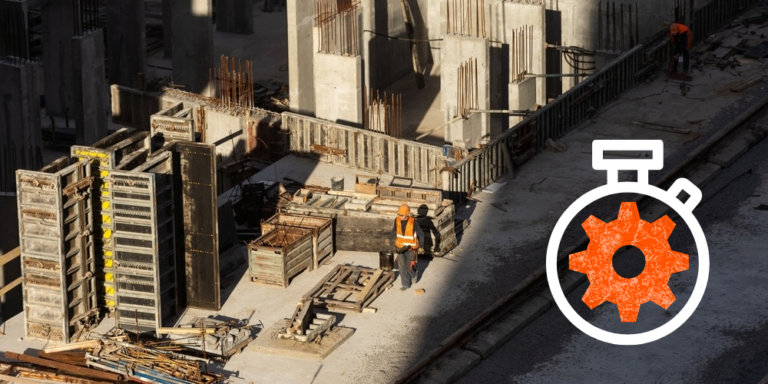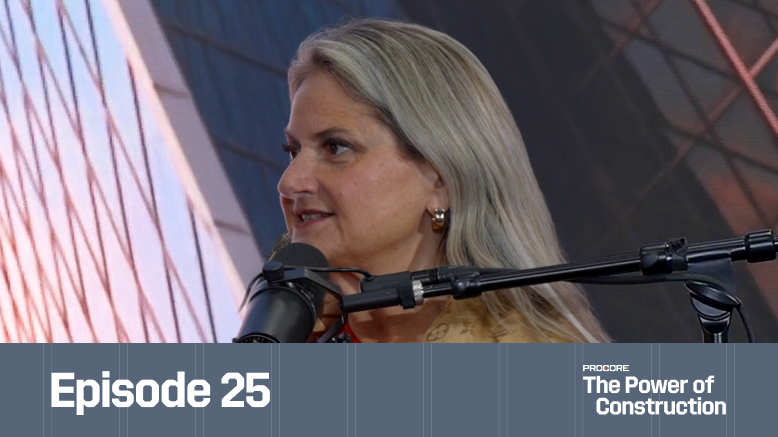— 7 min read
A Contractor’s Guide to Extension of Time (EOT) in Construction Contracts

Last Updated Oct 3, 2025

Kristen Frisa
Contributing Writer
111 articles
Kristen Frisa is a contributing writer for Procore. She also contributes to a variety of industry publications as a freelance writer focused on finance and construction technology. Kristen holds a Bachelor of Arts in Philosophy and History from Western University, with a post-graduate certificate in journalism from Sheridan College. She lives in Ontario, Canada.
Last Updated Oct 3, 2025

Even with careful planning and efficient execution, construction projects sometimes take longer than expected. When that happens, contractors may be able to apply for an extension of time (EOT) to move out the project deadline.
The provisions for using EOT can be tricky and owners can sometimes contest the use of the EOT clause, so contractors need to understand as much as they can about the contract they signed and what caused the delay.
This article will define an extension of time as it applies to construction contracts, discuss common reasons for requesting EOTs, present practical guidelines for presenting a request and go over the legal implications to keep in mind.
Table of contents
What is a Construction Extension of Time?
An extension of time (EOT) in construction is a request to delay the completion date of a project because the work is taking longer for reasons that couldn’t have been predicted when the contract was signed. In other words, if the project is delayed because of unavoidable and unforeseen events, the contractor may be able to apply for an EOT.
The EOT clause is in the contract to try to clarify and balance out the risk between the owner and contractor. The contract should define the events that trigger contractor entitlement to a time extension as specifically as possible to help avoid confusion and disputes.
What’s Included in an EOT Clause?
Contract language may differ from one agreement to another, but typically the EOT clause will include information on:
- Grounds for eligible extensions
- Request requirements including timing and format
- Documents to support the EOT request
- Details about the assessment and approval process
- Extension limitations
- Dispute resolution processes
Common Reasons for Requesting EOTs
Contract language should spell out stipulations for extensions of time. Clear and detailed contract language about allowable cases for EOTs may help prevent disputes over claims. Here are some examples of events that could lead a contractor to file a request for an EOT.
Weather Events
Unpredictable weather events can delay construction progression and make it impossible to meet the original project deadlines. EOTs may only be available if the exceptional weather is outside of what the contractor should have foreseen given the weather patterns of the region.
For example, it’s common to receive a lot of snow in Boston in the wintertime, so it may not count as a weather event that would allow for an EOT.
Unforeseen Site Conditions
Contractors use available information to estimate how long site preparation will take. Unexpected site conditions like underground obstructions or contaminated soil can necessitate a lot more work and create delays.
Scope Changes
If the contractor has to change the scope of work thanks to an unbuildable design or because the owner has a change of heart, the contractor may be eligible for an EOT. For example, if the owner asks for a redesign of one of the interior suites when most of the framing is complete, the delay may be eligible for an extension of time.
Delays in Receiving Permits or Approvals
Permitting can be delayed for many reasons outside the contractor’s control and can cause lengthy construction delays. The type of project and its complexity may impact how long it takes authorities to review and approve permits, so the timing can be very difficult to predict.
Force Majeure Events
Force Majeure are “acts of God” events that prevent the contract from being carried out as written. Force Majeure events may include severe weather like floods or earthquakes, but events like the Covid-19 pandemic or terrorist attacks that make it impossible to continue a normal workflow are also in this category.
The bar is generally set to events that were not foreseeable when the contract was signed and are outside everyone’s control.
NOV 6, 2025 at 11:00 AM PST / 2:00 PM EST
Free Webinar: Prove your project management software is profitable
Join Procore and Dodge Data & Analytics for a 2025 Dodge ROI Report deep dive.

How to File for an Extension of Time
By the time a contractor sets out to file for an extension of time, it’s likely the project timeline is already out of line. Contractors can help their chances of being granted an EOT by keeping meticulous records of their activities throughout the project and sticking very closely to contract requirements. Here are some best practices for handling EOT requests.
Document the project and communicate changes early.
Keeping close tabs on project activities and progress throughout the duration of a project can help contractors make their case for longer project timelines if the need arises. Teams should maintain detailed and up-to-date schedules, records of correspondence and site reports.
Careful documentation demonstrates the progress the project was making before any disruptions happened. When contractors collect and organize project data systematically, it’s easier to analyze and pinpoint when the project started to go off track, making a strong case for an extension of time.
Adhere to contract rules regarding EOT claims.
Read and understand contract language regarding EOT procedures and deadlines, following all the rules to improve the chances of a favorable response. Missing one of the requirements stipulated in an EOT clause may invalidate the claim.
Be clear and open in communications and EOT claim language.
Early and open communication can help smooth relationships and improve collaboration between owners and contractors. Contractors who inform owners early about any delays and give early warning that an EOT claim will be coming can help foster healthier working relationships and result in better outcomes.
Claim language should be clear and concise, including straightforward language about the reasons for the delay and the impact it will have on the project timeline.
Implications of Filing an EOT Claim
An EOT claim extends the time allowed for completing a certain aspect of the project, or in some cases even pushes out the final delivery date. No part of a construction project exists in a vacuum, so a timeline extension on part of the project can have far-reaching impacts.
A longer project timeline can cost the contractor more in labor, equipment and overhead costs, some of which may be included in the EOT claim.
Schedule disruptions can cause problems for subcontractors and suppliers who were ready to go according to the original schedule.
EOT claims can increase costs for the owner, as the contractor can claim additional costs for bond renewal, interest on the retention because of its delayed release and other costs that drive up the overall price of the contract.
Avoiding EOT Claims by Preventing Delays
EOT clauses provide a safety net if a construction project is delayed by some unexpected occurrence, but avoiding delays through proactive and quick-thinking project management can help prevent added costs and damage to client relationships. Here are some strategies to help avoid the need for EOT requests.
- Effective project planning and scheduling can anticipate potential risks and help avoid delays when the worst happens. Past project data can help provide case studies of how events have been managed to create improved processes.
- Proactive communication between prime contractors, subcontractors, owners and suppliers gives everyone more tools to help plan better and mitigate risks. Early notice of delays can help improve relationships and foster better outcomes.
- Including strong risk management procedures can allow teams to develop plans to avoid and handle delays before they impact project timelines. Analyzing patterns from past projects can illuminate possible risks so the team can steer around problem areas.
- Continuously monitoring project progress against expectations can help identify problems early to decrease impacts to project timelines. Strong processes for finding and addressing problems can help keep the project on track.
Improving EOT Outcomes
Extension of time clauses give the contractor extra time when something unexpected happens. Including one in construction contracts can provide a mechanism for changing timelines without the entire project imploding. However, negotiations over EOT approval and the length of time contractors are given to do the work don’t always go smoothly.
Including as many details as possible in EOT language can help avoid some disputes. Construction management software may help create open communication channels for smooth negotiations, and keep detailed records that are organized and provide backup to EOT claims.
Was this article helpful?
Thank you for your submission.
100%
0%
You voted that this article was . Was this a mistake? If so, change your vote
Scroll less, learn more about construction.
Subscribe to The Blueprint, Procore’s construction newsletter, to get content from industry experts delivered straight to your inbox.
By clicking this button, you agree to our Privacy Notice and Terms of Service.
Thank you!
You’re signed up to receive The Blueprint newsletter from Procore. You can unsubscribe at any time.
Categories:
Written by

Kristen Frisa
Contributing Writer | Procore
111 articles
Kristen Frisa is a contributing writer for Procore. She also contributes to a variety of industry publications as a freelance writer focused on finance and construction technology. Kristen holds a Bachelor of Arts in Philosophy and History from Western University, with a post-graduate certificate in journalism from Sheridan College. She lives in Ontario, Canada.
View profileExplore more helpful resources

Who is accountable for innovation in construction?
Everyone says construction needs to innovate—but no one agrees on who’s actually responsible for making it happen. Is it the owner? The builders? The tech vendor? Or is innovation everyone’s...

Integrated Project Delivery in Practice: A Framework for Collaboration
On construction projects, traditional delivery methods put different stakeholders in their own silos. While the design team feeds drawings and specifications to the general contractor (GC), the GC’s expertise in...

AI Construction Tools: Optimizing Every Stage of Construction
Builders, like everyone else, are being bombarded with information about incorporating AI into their work. However, determining which areas to automate can be challenging. This article explores the features of...

Construction Technology Data Analytics: The New Standard in Construction
Much of the newest wave of construction technology is impressive: drones performing site surveys, 3D printers manufacturing walls on-site, 360° reality-capture cameras, and more. But all this visible technology collects...
Free Tools
Calculators
Use our calculators to estimate the cost of construction materials for your next project.
Templates
Find a template to help you with your construction project tasks.
Material Price Tracker
Get the latest U.S. retail prices and view historical trends for common building materials.
Glossary
Explore key terms and phrases used in the industry.
